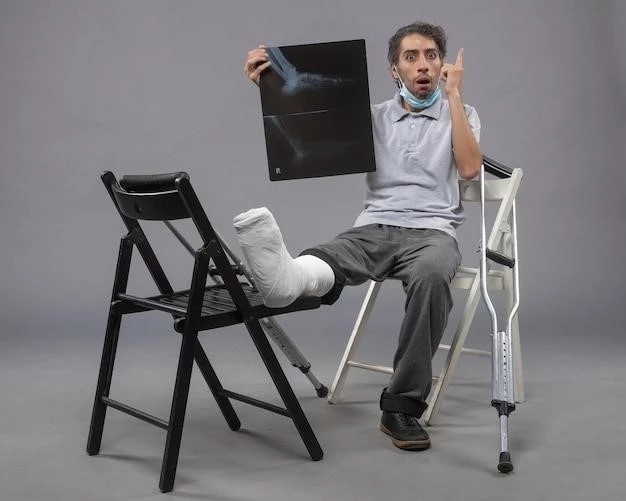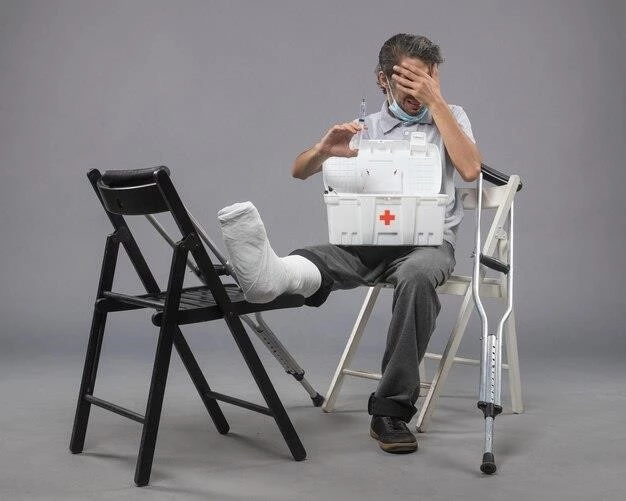Disease — Dwarfism with Thin Bones and Multiple Fractures
Dwarfism is a genetic disorder characterized by short stature and skeletal abnormalities. Osteogenesis imperfecta‚ also known as brittle bone disease‚ leads to frequent fractures due to low bone density. The combination of skeletal dysplasia and short stature can result in skeletal fragility‚ joint pain‚ and bone deformities. Calcium deficiency is common‚ affecting bone health. Growth hormone therapy and medical treatments aim to improve bone density and reduce the risk of fractures.
Overview of Dwarfism
Dwarfism is a medical condition characterized by short stature‚ typically resulting from a genetic or medical condition. It can manifest in various forms‚ including proportionate and disproportionate dwarfism. Proportionate dwarfism occurs when the body is uniformly small‚ while disproportionate dwarfism involves either short limbs or a short torso. Skeletal abnormalities are often present in individuals with dwarfism‚ affecting overall body structure and function.
Individuals with dwarfism may face challenges in daily life‚ including accessing workspaces designed for average-height individuals and experiencing social stigma. Despite these challenges‚ many individuals with dwarfism lead fulfilling lives with adaptations and support.
Genetic factors play a significant role in the development of dwarfism. Mutations in specific genes can impact bone growth and development‚ leading to the characteristic features of the condition. In some cases‚ dwarfism can be inherited from parents who carry the genetic mutation.
Medical professionals can diagnose dwarfism through a combination of physical examinations‚ imaging tests‚ and genetic testing. Early detection is crucial to address any associated health concerns and provide appropriate support for individuals with dwarfism.
While dwarfism itself is not a disease‚ individuals with this condition may experience health complications related to skeletal abnormalities‚ joint pain‚ and reduced bone density. Proper medical management and support can help individuals with dwarfism manage these challenges and improve their quality of life.
Understanding Osteogenesis Imperfecta
Osteogenesis imperfecta (OI)‚ known as brittle bone disease‚ is a genetic disorder characterized by fragile bones that break easily. Individuals with OI often experience multiple fractures throughout their lives due to a defect in the production of collagen‚ a protein essential for bone strength. This leads to bones that are prone to fractures from minor trauma or even spontaneously.
There are different types of OI‚ ranging from mild to severe‚ depending on the specific genetic mutations involved. Common symptoms of OI include skeletal fragility‚ short stature‚ bone deformities‚ and a blue tinge in the white of the eyes (sclera). Individuals with OI may also have hearing loss and dental problems.
The diagnosis of OI typically involves genetic testing‚ imaging studies such as X-rays‚ and clinical evaluation by healthcare professionals. Early detection is crucial to initiate appropriate management strategies and interventions to minimize the risk of fractures and improve bone health.
Management of OI focuses on optimizing bone density and reducing the risk of fractures. This may involve treatments such as bisphosphonates to increase bone strength‚ physical therapy to improve muscle strength and mobility‚ and surgical interventions to correct bone deformities.
Lifestyle modifications‚ such as maintaining a balanced diet rich in calcium and vitamin D‚ are essential for supporting bone health in individuals with OI. Regular monitoring of bone density and preventive measures to reduce the risk of falls can help mitigate the impact of this condition on daily life.
While there is currently no cure for OI‚ ongoing research into gene therapy and emerging treatment options offers hope for improving outcomes and quality of life for individuals living with this challenging genetic disorder.
Skeletal Dysplasia and Short Stature
Skeletal dysplasia refers to a group of genetic disorders characterized by abnormalities in bone growth and development. These conditions can result in various skeletal abnormalities‚ including short limbs‚ abnormal spinal curvature‚ and joint deformities. Short stature is a common feature of skeletal dysplasia‚ reflecting the impaired growth of bones.
Individuals with skeletal dysplasia may have disproportionate body proportions‚ with certain body parts appearing larger or smaller in relation to the overall size. The severity and specific features of skeletal dysplasia can vary widely‚ depending on the underlying genetic mutation and how it affects bone development.
Short stature in skeletal dysplasia is often attributed to abnormalities in the growth plates (epiphyses) of the bones‚ which play a crucial role in longitudinal bone growth. Disruptions in the growth plate function can lead to reduced bone elongation and overall height.
In addition to short stature‚ individuals with skeletal dysplasia may experience joint pain‚ limited range of motion‚ and increased risk of fractures due to skeletal fragility. These challenges can impact daily activities and quality of life‚ necessitating comprehensive medical management and ongoing support.
Early diagnosis of skeletal dysplasia is essential for initiating appropriate interventions and management strategies to address the unique needs of individuals affected by these genetic disorders. Genetic counseling can help families understand the inheritance pattern and potential recurrence risks associated with skeletal dysplasia.
Improving bone health and minimizing the risk of fractures are key goals in the medical management of skeletal dysplasia. Treatments may include physical therapy to enhance mobility‚ orthopedic interventions to address bone deformities‚ and nutritional support to optimize bone density.
By combining multidisciplinary approaches that consider the specific challenges of skeletal dysplasia‚ healthcare providers can help individuals with this condition effectively manage their symptoms‚ improve their overall well-being‚ and maintain functional independence in their daily lives.

Fractures and Bone Health in Dwarfism
Fractures are a common concern for individuals with dwarfism‚ particularly due to skeletal abnormalities and diminished bone density. The reduced bone mass in individuals with dwarfism predisposes them to fractures‚ which can occur with minimal trauma or stress on the bones. Fractures in individuals with dwarfism can be more challenging to treat and may require specialized care to promote proper healing.
Optimizing bone health is essential for individuals with dwarfism to reduce the risk of fractures and maintain overall musculoskeletal integrity. Adequate intake of calcium and vitamin D is crucial for supporting bone density and strength. Regular weight-bearing exercises can help improve bone mass and reduce the likelihood of fractures.
Medical management strategies for individuals with dwarfism often include monitoring bone density through imaging studies such as dual-energy X-ray absorptiometry (DXA) scans. These assessments help healthcare providers track changes in bone density over time and adjust treatment plans accordingly to promote bone health.
In some cases‚ healthcare providers may recommend the use of bisphosphonates or other medications to improve bone density and reduce the risk of fractures in individuals with dwarfism; These medications work by slowing down bone breakdown and enhancing bone strength‚ thereby decreasing the susceptibility to fractures.
Preventive measures‚ such as fall prevention strategies and environmental modifications to reduce injury risks‚ are essential components of comprehensive care for individuals with dwarfism. By creating a safe living environment and promoting bone-healthy habits‚ the incidence of fractures can be minimized‚ improving the overall quality of life for individuals with dwarfism.
Healthcare providers play a crucial role in educating individuals with dwarfism and their families about the importance of bone health practices and fracture prevention strategies. By implementing a holistic approach that addresses both the physical and psychological aspects of living with dwarfism‚ healthcare teams can support optimal bone health and well-being in individuals affected by this condition.
Symptoms and Complications
Individuals with dwarfism commonly experience a range of symptoms and complications related to their condition. These may include short stature‚ skeletal abnormalities‚ joint pain‚ and reduced bone density. Short limbs‚ disproportionate body proportions‚ and spinal curvature are typical features seen in individuals affected by dwarfism.
Fractures are a significant concern for individuals with dwarfism due to skeletal fragility and bone deformities. The increased risk of fractures can lead to complications such as chronic pain‚ limited mobility‚ and reduced quality of life. Fractures may also affect daily activities and functional independence‚ requiring specialized care and support.
Joint pain is another common symptom experienced by individuals with dwarfism‚ often resulting from skeletal abnormalities and musculoskeletal issues. The structural changes in the joints due to skeletal dysplasia can contribute to pain‚ stiffness‚ and reduced range of motion‚ impacting overall physical function.
Reduced bone density is a key complication of dwarfism‚ making individuals more susceptible to fractures and bone deformities. Calcium deficiency and vitamin D insufficiency can further exacerbate bone fragility‚ affecting overall bone health and increasing the risk of fractures in individuals with dwarfism.
In addition to physical symptoms‚ individuals with dwarfism may also face social and emotional challenges due to their condition. Stigma‚ discrimination‚ and psychological effects related to body image and self-esteem can impact mental well-being. Access to appropriate support services and a supportive community can help individuals with dwarfism navigate these challenges.
Regular monitoring by healthcare providers is essential to identify and address symptoms and complications early in individuals with dwarfism. Comprehensive care plans that incorporate medical management‚ physical therapy‚ nutritional support‚ and psychosocial interventions can help optimize the health and well-being of individuals living with dwarfism.
Diagnosis and Medical Treatment
Diagnosing dwarfism involves a comprehensive evaluation that includes a physical examination‚ medical history review‚ imaging tests‚ and genetic analysis. Healthcare providers assess growth patterns‚ bone structure‚ and developmental milestones to identify characteristics of dwarfism. Genetic testing can help determine the specific genetic mutation responsible for the condition.
Medical treatment for individuals with dwarfism aims to address symptoms‚ complications‚ and promote overall well-being. Growth hormone therapy is a common intervention used to promote growth and increase final adult height in some individuals with growth hormone deficiency. Regular monitoring of growth velocity and hormone levels is essential to adjust treatment as needed.
Management of skeletal abnormalities and bone health in individuals with dwarfism often involves a multidisciplinary approach. Orthopedic interventions may be necessary to address bone deformities‚ correct spinal curvature‚ and improve mobility. Physical therapy can help strengthen muscles‚ enhance joint flexibility‚ and support overall physical function.
Monitoring bone density through imaging studies such as DEXA scans is crucial for evaluating bone health and assessing the risk of fractures in individuals with dwarfism. Healthcare providers may recommend calcium and vitamin D supplements to support bone strength and reduce the risk of fractures. Bisphosphonates and other medications may be prescribed to improve bone density.
Individuals with dwarfism may benefit from nutritional counseling to ensure adequate intake of essential nutrients for bone health. A balanced diet rich in calcium‚ vitamin D‚ and other essential minerals can help support bone density and reduce the risk of fractures. Lifestyle modifications‚ including regular exercise and fall prevention strategies‚ are key components of managing dwarfism.
Psychosocial support and access to resources for individuals and families affected by dwarfism are important aspects of care. Education‚ advocacy‚ and community support can help individuals navigate the challenges associated with dwarfism and promote a positive quality of life. By combining medical treatment with holistic support‚ healthcare providers can empower individuals with dwarfism to thrive and manage their condition effectively.
